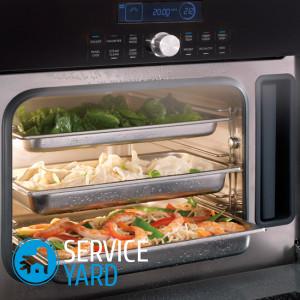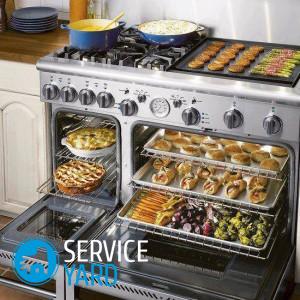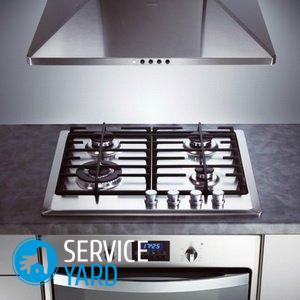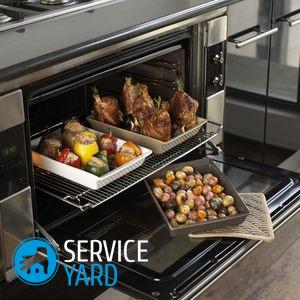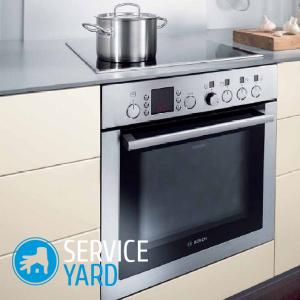Catalytic cleaning of the oven - what is it?
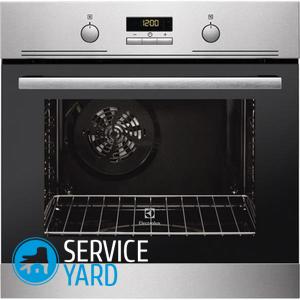
Modern cuisine is hard to imagine without an oven. To please relatives with pies, pizza, meat in French, duck with apples and thousands of other tasty and healthy dishes is a pleasure for any housewife. However, for a long time the joy of cooking was overshadowed by the fact that the oven had to be washed quite often, and this was a laborious and unpleasant affair. But the design idea is not asleep, and the engineers proposed such cleaning methods that do not require much effort or serious time costs. One of these methods will be discussed in this article. Catalytic cleaning of the oven - what is it and how is this method different from others?
to contents ↑What are the cleaning methods?
The manual cleaning method is familiar to anyone who has ever had an old electric or gas oven. Everything was simple there - a washcloth and paste were taken, and the hostess was tearing off the walls, floor and ceiling of her precious oven, as far as there was enough time and energy. The disadvantages of this method are obvious:
- a lot of time was leaving;
- a lot of effort was spent;
- it was difficult to achieve perfection - still there were specks of fat.
In modern ovens, three cleaning methods are used:
- pyrolysis;
- hydrolysis;
- catalysis.
to contents ↑Important! If you often plan different dishes in the oven, it makes sense to find out about:
- What is convection in the oven?
- How does it work microwave oven?
Pyrolysis
Pyrolysis oven cleaning is considered very effective. With this method, food debris, fats and everything else that forms during cooking simply burns out. Hence the name - “pyro” means “fire”.
Obvious advantages:
- Full cleaning.
- All unnecessary turns to ashes.
- Accordingly - after pyrolysis, you do not need to wash anything.
- The oven does not need to be disassembled before cleaning, including pulling out trays.
- If you buy an oven with a pyrolytic system, you can be firmly convinced that it is made from very high quality materials.
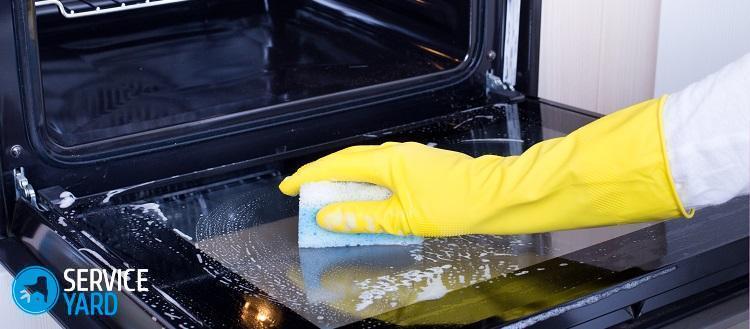
The disadvantages of pyrolysis:
- The oven uses a lot of energy during self-cleaning.
- Additional equipment is needed - a power cable that can withstand high voltage.
- The process cannot be controlled - the door is blocked at this moment, and the oven heats up to maximum temperature.
- You have to start the cleaning system manually.
- High price - these are the most expensive ovens.
- If you have not cleaned your oven for a long time, get ready for the fact that during the pyrolysis an unpleasant smell will go.
- Pyrolysis can adversely affect kitchen furniture and wall cladding - a very high temperature load.
- A hood is very desirable.
Not all oven models have removable elements made of heat-resistant materials, so in some cases the trays and grill have to be removed from the oven and cleaned by hand.
Well-known manufacturers like Bosch offer customers pyrolytic level ovens. Such a system can significantly reduce energy consumption, because the oven can be cleaned at lower temperatures.
Important! The pyrolytic system can only be installed in an electric oven (most often built-in), it is very dangerous to use such a system in gas devices.
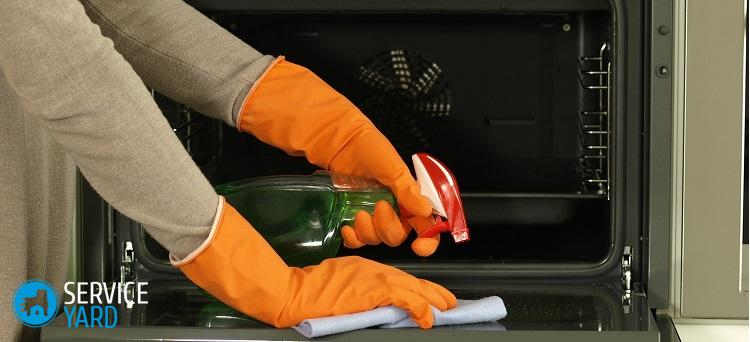
Hydrolysis cleaning
The word “hydro” means “water,” so this oven cleaning method involves the use of water. Such ovens are cheaper than those with a pyrolysis cleaning system. In addition, cleaning is carried out at a lower temperature, so this cleaning method can be considered more gentle.
Important! Our review will help you understand all the intricacies of setting up the model you are looking for. “What do the icons on the oven mean?”.
Steam oven cleaning - what is it?
Some water is poured into the pan. Detergent added. All this is put in the oven, which is turned on at a temperature of no higher than 90 ° C (and can be lower) and left in this form for about half an hour. Steam appears in the oven, which includes a cleaner. Steam acts on what covers the walls of the oven - the remnants of fats, droplets of food, etc. The dirt softens, after which it is removed with a regular rag.
Advantages of hydrolytic cleaning ovens:
- These are cheap ovens.
- During cleaning, the oven “eats” no more electricity than always.
- There is no negative effect on furniture and built-in appliances - the temperature is maintained the most common for the oven.
Disadvantages:
- Strictly speaking, hydrolysis is not a self-cleaning system, the oven will still have to be washed.
- If the fat is dry, the system does not work.
- Before cleaning the oven, turn it off and let it cool.
Important! During hydrolysis cleaning, the pan with water and the cleaner must be placed on the lowest shelf.
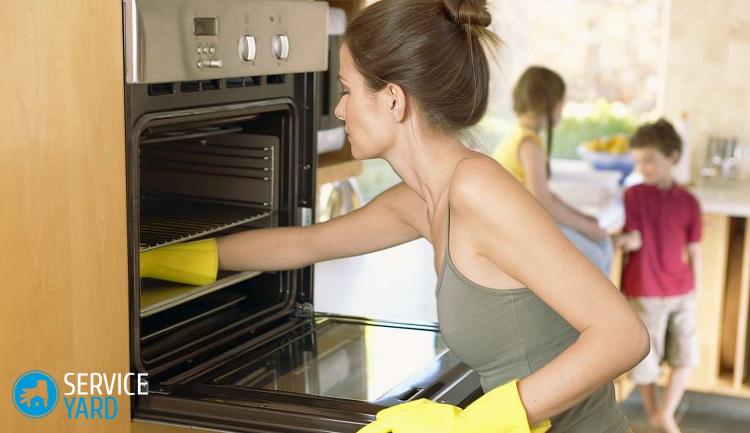
Catalytic cleaning of the oven
Catalysis, as follows from the school chemistry course, means “acceleration”. Accordingly, catalytic purification is the removal of food and fat residues under the influence of other substances that accelerate the decay process and make it more efficient. The catalysts are copper, cerium dioxide, manganese, cobalt.
The inner surface of the equipment is covered with a special composition, which, with increasing temperature, begins to break down fats. Fat breaks down into water and carbon. After cooking, all this is very successfully removed with a regular sponge.
Wall covering is a special enamel. If you look at her, then make sure that she is dark and quite uneven. On closer inspection, you will notice pores that are filled with catalyst.
And then the chemical reaction begins. The oven heats up, the fats oxidize and break down. The fastest self-cleaning system operates at a temperature of 200-250 ° C, that is, the equipment does not need to be turned off before cleaning, the reaction goes right while cooking. The self-cleaning process begins at a lower temperature, about 150 ° C.
Important! The purchase of such expensive equipment should be made not only on the basis of the best cleaning system. This is more a matter of personal convenience for the user, on which further cleaning time depends. But what are the fundamentally important technical points, learn from our article “How to choose an electric oven?”.
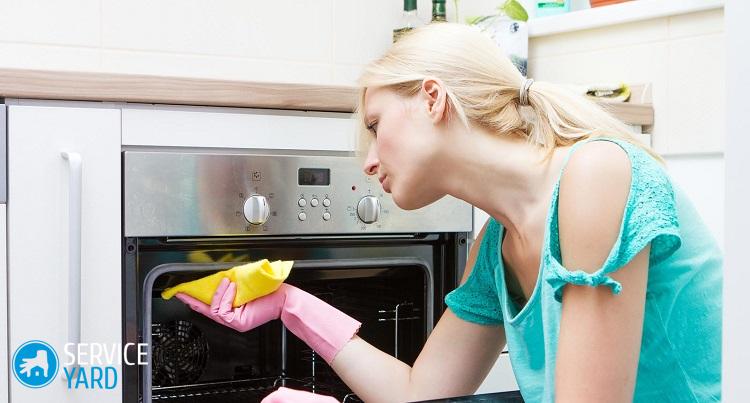
Advantages
Catalytic purification has obvious advantages.
- This is really self-cleaning, that is, you just have to delete the results.
- No additional power consumption.
- Catalytic panels are installed in both electric and gas models.
Important! A lot when working with household appliances depends on the manufacturer, because the quality of components, functionality, ergonomics, surface durability and design - all this requires experience and literacy, as well as conscientiousness and responsible approach to development. It will help you understand which trademark is better to give preference to specially composed rating of the best built-in electric ovens.
disadvantages
However, this perfection has certain disadvantages:
- catalytic cleaning of the oven is less effective than pyrolysis:
- some actions have to be done manually;
- does not clean parts on which the catalyst is not applied;
- this system must be used constantly, otherwise - it becomes ineffective;
- plates need to be changed periodically - on average once every five years.
You can change the plates yourself, this is not particularly difficult. And on some modern models, catalytic panels cover the entire interior of the equipment, except for the door.
Now on sale you can find panels with double-sided coating. Of course, they are somewhat more expensive than usual ones, but they also last longer - when neutralizing the catalyst on one side, the panel can be simply turned over.
Important! Dairy products, as well as sugar, reduce efficiency - the coating is simply neutralized.
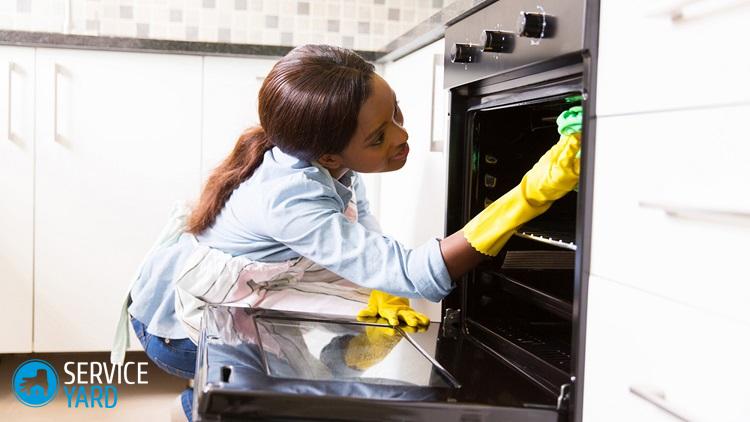
Which cleaning system to choose?
There is no single answer to the question which oven cleaning is best. It all depends on what exactly you cook in it and how often you use it:
- If you turn on the oven less than once a week, any system is right for you.
- Those who use such equipment almost every day, it is better to invest and buy the one with the pyrolytic cleaning system.
- Also think about what you cook most often. For meat under mayonnaise, duck, meat and fish casseroles, the catalytic cleaning of the oven is excellent.
- But if your loved ones more than anything love pies with jam and other sweets - you are tormented by cleaning the oven, even if its entire inside is covered with catalytic plates. The plates are coated with an adhesive film that blocks the catalyst. The same thing happens if you cook open cakes with cottage cheese - casein gets on the walls, which does not allow the catalysts to work.
to contents ↑Important! Do not forget that any equipment requires proper installation. Otherwise, it will not only work less than the period declared by the manufacturer, but may also become unsafe for the user. If you already figured out the best cleaning system for yourself and other criteria for choosing an oven, looked at the model that corresponds to them, it's time to get confused with the installation issues. At this stage, it will be useful for you to read our articles:
Keep in mind that even if you do not plan to independently perform these works due to lack of experience, you need to have an idea of the correctness of their implementation, at least in order to be sure that the master does everything competently and responsibly.
Stock footage
Now that you have a full understanding of the possible options for cleaning systems, it will be easier for you to decide which is better. And if this is a catalytic cleaning of the oven, you will surely appreciate all its advantages.




